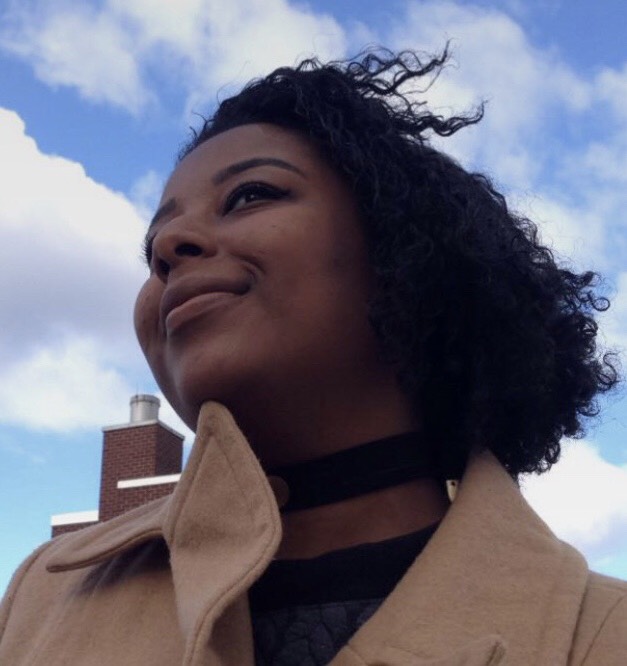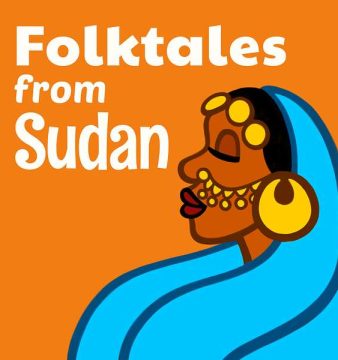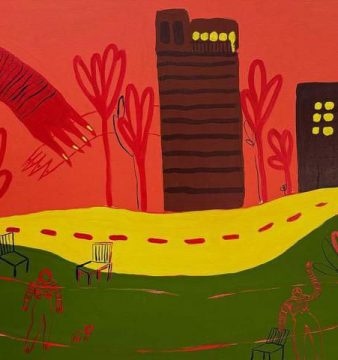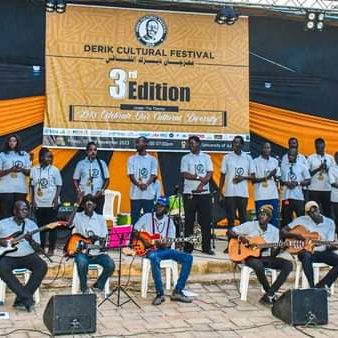Art and Identity: A Conversation with Ahmed Umar

Initiated by Emirati art and architecture columnist, Sultan Al Qassemi in 2018, NYC Cultural Majlis is a bimonthly event that invites artists to share the purpose and process of their works that often relate to the culture of the Middle Eastern and North African (MENA) region. In July 2019, one of their talks featured Ahmed Umar, a Sudanese-Norwegian cross-disciplinary artist based in Oslo, Norway. It was the first time the Majlis hosted a Sudanese artist and the first time Umar was a guest speaker to an audience predominately from the MENA region.
Born in 1988, Umar was raised between Sudan and Mecca, Saudi Arabia. He moved to Norway in 2008 as a political refugee and graduated in 2016 with an MA in Fine Arts from the Oslo National Academy of the Arts. Working with ceramics, jewelry, performance, and printmaking; since graduating, Umar’s artwork showcased in several galleries and museums, both nationally and internationally including; FORMAT, Kunstnerforbundet, Kunstnernes Hus, Museum of Cultural History (Oslo), and Kunsthall Oslo. Umar’s identity as a gender fluid queer man has been a source of artistic inspiration and personal turmoil that contradicted conventional notions of his Sudanese identity. He uses his artistic methods as a mechanism to navigate the complex relationships between identity, authority, sexuality, and art.

The duality of being a Sudanese man, specifically a Kushite, contradicted with Umar’s modern-day upbringing in the birthplace of Islam – a religion that prohibits homosexuality. Among academics who study Nubia, there exists a rumor that ‘there were entirely homosexual groups of men living in the Kingdom of Kush’. According to Umar, this historical narrative resonates with what he refers to as the ‘pyramid culture’ of his people. Despite his upbringing between Sudan and the hyper-religious environment of Saudi Arabia, Umar found himself grappling between a society that vilifies LGBTQ+ and his ancestral lineage, which he believes tolerated queer culture.
A shy child, Umar began to show interest in art at an early age and drawing became his prime vehicle of expression. However, growing up in Saudi Arabia, not too far from Masjid Al-Haram, he found it difficult to convey his message due to religious, cultural, and political restrictions. Sexuality in all its forms is generally a taboo subject, usually discussed privately. Homosexuality especially was a forbidden topic that could potentially have grave consequences if publicly supported or sympathised. Charged with a social critique, candor, and elements of his Kushite heritage, in March 2015 Umar decided to come out publicly as gay, a decision that would later dictate his personal relationships and influence his artistic endeavors.
Hailing from an established Sufi family in Sudan, Umar drew inspiration from Sufism, combining his love for Sudanese culture and his identity as a gay man to illustrate his artistic message, one that reflects his memories and signals a long process of self-understanding and acceptance. His work artistically visualises his analysis on the traditions and culture, which he believes has limited his freedom to becoming true to himself and society. The notions of masculinity and femininity are represented interchangeably and simultaneously throughout his work, contradicting society’s gender norms. Whether wearing a white toub in support of Sudan’s revolutionary women or wearing the traditional garmassees as an ode to Sudanese culture and women, Umar clearly exhibits his views on societal contradictions.

In addition to physical representations of gender, he also explores sentiments attributed gender expectations and the concept of ‘machismo’. Unaware of the gravity of his father’s health condition, Umar’s father passed away while he was in Norway and was unable to return for the funeral due to his pending paperwork. The pressures of society inhibited him to express his emotions. During the period of mourning, visitors expressed their condolences and offered however, he noticed that no one thought of asking him what he felt and what he was going through. To honour his father’s memory, Umar initiated an installation titled ‘Funeral Ceremony’ representing a private funeral ceremony. He carved a copper plate with his father’s actual measurements picturing him in his last days, treating the copper plate as his body and performing the Muslim burial customs on the sculpture – washing, covering, and aromatising the body. The installation consisted of a large etching print, a shroud, perfume copper plate, and a prayer mat. Umar’s art reflects the polar expectations of men and women even in something as universal and indiscriminate as death.
Personal relationships played a significant role in his art as well. After years of pretending and hiding, Umar grew tired of those feelings and expressions that did not accept his true identity. Umar grew tired of this narrative and in 2015 decided to filter out those who only wanted to be his family based on their conditions. Wearing the traditional Sudanese jalabiya with a garmassees fabric, Umar posted the image to Facebook, garnering both support and criticism. His own sister expressed her discontent, believing that his death is less painful than the shame he brought upon his family. In response, he produced the ceramic triptych sculptures, ‘What Lasts! (Grave)’,where he combines the influence of pharaonic elements with Islamic ones. He built a sarcophagus for his body emulating the pharaohs of ancient Sudan, and covered the lid with a full cast of his figure and created a grave with the two verses in the Quran about Sodom and Gomorra, which is often used, in religious context to condemn homosexuality.
There is a Sudanese proverb, that says, ‘If you no longer have a family, make your own family with clay’, simply meaning a lump of clay is better that a person in flesh and blood that hurts you. When news started to spread that he was queer, Umar literally recreated the proverb in a participatory performance. He built over 230 clay figures of family members and friends who have left his life leaving a legacy of pain and disappointment in his memory. He shared the performance in several places around the world and with different age groups.
Umar also wanted to show society’s contradiction with religion, where the culture is often selective on the implementation of religious teachings. Despite abandoning Islam three years ago, he continues to appreciate the beauty in it. A source of artistic inspiration, Islamic elements are visible in his sculpture exhibit called ‘Would any of you like to eat a dead brothers flesh?’ Islam explicitly forbids Muslims from gossiping, spreading rumors, or engage in backbiting of another person, something that Umar continues to experience. To capture the hypocrisy, Umar once again cast his physique in ceramic, and displayed his body parts in a butcher-like fashion. This is a visual representation of the Quranic verse, which compares gossiping and backbiting to eating the flesh of the person discussed. In exchange of their gossips, he is offering his rotting flesh. A storyteller, Umar uses art as medium not just to produce visual decorations, but also to narrate his personal life and social issues.

Sudan’s recent and ongoing protests became a source of inspiration for Umar and social media became his platform for artistic engagement and endorsement for his country of birth and the revolutionaries. However, this was not the first time Umar’s work took a political turn. In 2013, he created ceramic sculptures resembling cattle, an animal that symbolises Sudanese pride and strength, to express his anger and disappointment over the failed revolutionary attempts. A prominent characteristic of the ceramic cattle were the horns, which stood as tall as Umar himself. The installation titled ‘Thawr, Thawra‘ is a play on words in Arabic meaning, ‘Ox, Revolution‘. The sculpture was selected to be showcased at Hannah Ryggen Triennial in Trondheim, Norway. Umar was one of six artists chosen from around the world to exhibit at this show. The sculpture is now part of a collection owned by Norway’s National Museum.
Umar’s ultimate goal is to have his artwork displayed in well-established and renowned museums. While his success is international, he hopes that his art will also displayed and supported in Sudan. ‘There is a lot of art and beauty coming from Sudan and I think it can make a positive change. We are silenced. We lack opportunities. We have talents and culture. We just need a platform,’ he said.

An aspiring peacemaker, Yousra Khalil graduated with an M.A. in International Affairs with a concentration in peace and conflict resolution from the George Washington University. When she’s not working on countering violent extremism, she enjoys trivia, naps, travelling, memes, and good food. Currently based in Washington, DC, Yousra splits her time between the US, Qatar and Sudan.




